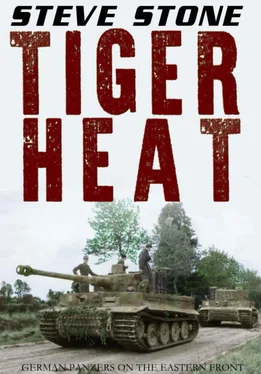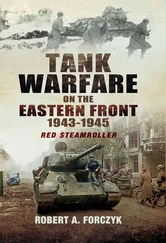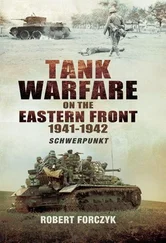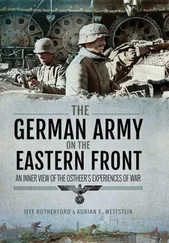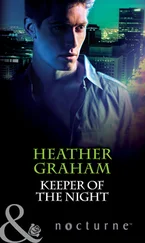Any cars that had remained intact on the street were now twisted burning metal. The King Tigers ploughed on through the explosions as they burst in multiples at the front rear and sides of the King Tigers. As the Tigers got towards the end of the main road through the Town – Kruger the Commander of the lead tank could see the Red Army infantry fleeing from the edge of the town as the artillery bombardment continued.
They would either trap the King Tigers by blocking them so the artillery could finish them off or possibly fleeing as German armour and infantry approached. The Red Army were good tacticians and should never be underestimated. The King Tiger traversed its turret slightly to search for targets. An IS-2 had appeared to the left of the fleeing Red Army infantry. This looked like the start of a Red Army counter offensive. The IS-2 had appeared from the side of a building.
The Jagdpanther had moved into some cover near a group of trees and the two Panthers had moved closer to the building on the perimeter of the Town. A shot from the IS-2 hit the gun mantle on the Jagpanther. It caused the Jagpanther’s main gun to jerk upwards and in doing so broke the jaw of the gunner and knocked him out cold. The round had damaged the mechanism for raising and lowering the gun and the main gun was now stuck in a raised positon. The Jagdpanther had no choice but to reverse and try to get itself out of the line of sight of the IS-2. The slow reloading time of the IS-2 would aid in the Jagdpanthers escape and allow it to get away for repairs, although it would now be out of action for at least 24 hours. The gunner would also need to be replaced by most likely a 16-17-year-old, whom had had no battle experience and the minimum amount of training.
The IS-2 was joined by a pair of T-34s. A King Tiger quickly got off a round. The 88mm HE round hit the first T-34 in the turret and blew its turret off, the turret blew off and fell onto the rear of the second T-34 in flames. Rather than stay with their tank the crew of the second T-34, thought they had been hit and where on fire and bailed out of the T-34. They must have got a bit of a shock to see a T-34 turret resting on their rear deck.
The first T-34 was now fully ablaze and round were starting to cook off as the heat inside the hull became more intense. With one T-34 knocked out and another abandoned, a King Tiger still fired a round into the side abandoned T-34, just to make sure it could not be reused.
With the T-34 threat neutralized, attention was now drawn to the much deadlier threat posed by the IS-2 and its 122-mm gun. The IS-2 had now reloaded and was slowly moving up to get into position. The King Tigers could not get a fix on the IS-2 as their view was blocked. The two Panthers had a line of sight on the IS-2 and both got a shot off. The first shot hit the left-hand corner doing some minor damage to the front corner and the second shot missed the IS-2 totally.
The IS-2 got another shot off with an AP round and this hit the Panthers frontal armour. The shell managed to prise the interlocking plates of the frontal armour apart. The welded joint had completely failed. Inside the tank, shrapnel flew around causing a severe laceration to the MG gunner’s leg. The commander had been hit in his stomach and his guts had fallen out onto the gunner’s lap. The scene inside the Panther was horrific. The impact of the AP round had also shattered the final drive. The Panther was also immobilized. With no time to waste, the crew scrambled out the escape hatch and sought refuge in a building to the right of the Panther. With only one crewmember dead and a couple of nasty cuts, the crew had made a lucky escape.
The remaining Panther fired another round at the IS-2, this slammed into the turret of the IS-2 causing a large chunk of armour to come off. It also knocked the commander and gunner out cold, giving further valuable seconds for the Panther to fire again. The King Tigers had started to move up and try to outflank the IS-2. As they reached a gap between two buildings, they finally got sight of the frontal area of the IS-2, its mighty gun pointing out in front.
Two King Tigers fired off their 88 guns and both rounds hit the front of the IS-2. One round split the front of the IS-2 open and the other round pierced the lower frontal armour before going right through the crew area and becoming buried in the engine bay. The shock from the impact sent the engine timing out of phase, causing the valves to impact with the pistons and the engine seized. The interior of the tank was filled with carbon monoxide fumes that quickly caused the crew to become light headed. The Panther had tried to manoeuvre away so it could fire into the side of the IS-2. The Panther fired off another round that hit pierced the IS-2s side armour plate, causing the ammunition to explode and the turret hatch to blow off and a large tower of flame to shoot out of the hatch.
The MG gunner’s in the King Tigers continued to fire their MGs spitting out thousands of rounds at the fleeing Red Army. Just then, an anti-tank rocket flew from a fleeing Red Army soldier in a long trail of fire and exploded against one of the wheels of a King Tiger. This caused the wheel to fly off and land the other side of the street propped up against a wall. The commander grabbed his MP 40 and joined in laying down fire – as the gunner moved the turret round to the fleeing Red Army. Using the last of his HE rounds, he fired into the centre of the swarming mess. The round exploded and Red Army soldiers were thrown up into the air, their contorted bodies silhouetted against the bright flash from the HE round. This caused the Red Army soldiers to move in all directions trying to make it to the nearest available cover. The Tigers continued to move up and fire off their remaining rounds, stopping at the edge of the Town as fuel and ammunition supplies were nearly exhausted.
The Red Army had been repelled for now, but this would be one of the last victories the German Army would have, before performing a fighting retreat all the way back to Berlin and the fall of the Third Reich. The Tigers had proven themselves to be a great tank and more than a match for the finest Soviet tanks. Tank technology had moved forward immensely during WWII and what had been learnt on the battlefields of the Eastern and Western Front would still be relevant to modern tank battles of today.
PANZRKAMPFWAGEN II – The PzKpfw II was in an interim light tank ordered in 1934 to bridge the gap between the Panzer I and new armoured fighting vehicles the PzKpfw III and PzKpfw IV. The specification called for a ten-ton armoured fighting vehicle with a 20-mm gun in a fully revolving turret. Henschel, Krupp and MAN of Augsburg all responded. Krupps proposal was the simplest. Involving the mounting of a 20-mm cannon and machine gun in the existing PzKpfw I, but it was the tank developed by MAN that was selected for production. MAN produced several prototypes under the cover-name Landwirtschaftlicher Schlepper (industrial tractor) and the tank was accepted for production. MAN was responsible for the chassis and Daimler-Benz for the superstructure. The first production Ausfuhrung A tanks were delivered in 1935 and production continued well into 1942, despite the experience of the French campaign in 1940 showing that the tank was obsolete. Several variants were produced, one of the most interesting being an amphibious version intended for the invasion of England in 1940. The Panzarkamfwagen II was powered by a six cylinder Maybach HL62TR 140hp petrol engine. With a top speed of 24 mph and a range of 124 miles. It weighed 9.5 tons.
PANZRKAMPFWAGEN III – The PzKpfw II came about as the German Army decreed that each armoured battalion should be equipped with three companies of relatively light medium tanks and one company of heavier more powerful support tanks (the latter becoming the Panzer IV). The Panzer III tanks was designed because of this. While the Panzer IV was designed for infantry support role, the Panzer III was intended to fight and destroy other tanks. Mass production of the tank began in 1939. The first three production models Ausfuhrungen A, B and C were built in relatively small numbers and were used during the invasion of Poland in September 1939. The D model which came next had thicker armour and a revised cupola. In 1940, Ausfuhrung F entered production. This last production variant had a 50mm gun and was fitted with just six road wheels. The Ausfuhrung G had similar armament, but was fitted with a more powerful engine. By mid-1941 the Panzer III was the most popular German tank and most of the Panzer IIIs had been fitted with a 50mm gun. It was used successfully against the British Army in North Africa in 1941, when every type of British tank was outgunned. The F model was fitted with a Maybach HL120 V-12 300hp petrol engine. It had a top speed of 25 mph and a range of 102.5 miles. It weighed 19.2 tons.
Читать дальше
